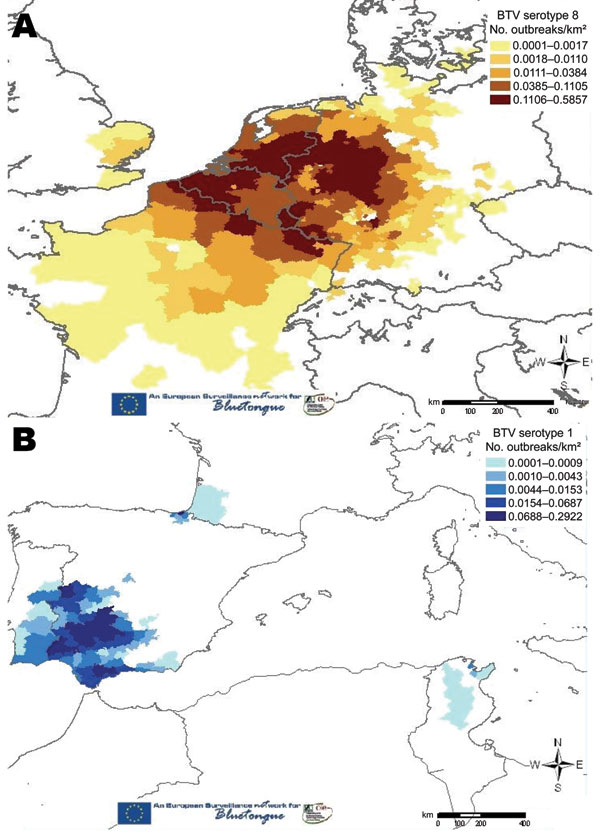Based upon the name, Tick-borne encephalitis virus (TBEV) would be expected to be transmitted by ticks. And it appears it is. But it can also be spread by milk/milk products. A recent paper has reported a case in Slovenia where 3/4 people who drank the milk of a goat (later found to be positive for TBEV) became ill. TBEV is a flavivirus and is present in many parts of Europe, with incidence levels in recent years of up to 18.6 cases/100,000 people.
Transmission of TBEV in unpasteurised milk hasn't previously been reported in Slovenia specifically, but it was already known that TBEV can be transmitted in raw dairy products. In a recent study, four people had drank unpasteurised colostrum from a goat, three of whom subsequently became sick, having symptoms of fever, malaise, headache, nausea and tremor. Although TBEV RNA couldn't be detected in the blood of any of the three patients, they all had antibodies. IgG and IgM isotypes were detected by ELISA, and the serum was neutralising for the virus. The fourth person, who didn't become ill, had been vaccinated against TBEV and had good antibody titres against TBEV, although IgG titres taken at different intervals suggested they'd received a boost, presumably as a result of drinking the infected milk.
The authors took samples from the 9 goats and 9 sheep on the farm, and tested them for evidence of TBEV.
Perhaps unsurprisingly, 5/9 goat sera and 1/4 goat milk samples were positive for TBEV antibodies. The suspect goat whose milk had been drunk prior to the patients becoming sick was also shown to have RNA (indicative of virus) in both the blood and milk, confirming that the goat had evidence of actual viral antigen.
None of the sheep samples were positive, which I find one of the most intriguing points - do ticks prefer goats, or is there species specificity when it comes to TBEV?
According to the authors, drinking unpasteurised milk is fashionable as part of a 'natural lifestyle'. Based upon this paper, the risk of contracting TBEV (as well as other pathogens) would therefore also be part of the natural lifestyle; that's an interesting choice of lifestyle.
Hudopisk, N., Korva, M., Janet, E., Simetinger, M., Grgič-Vitek, M., Gubenšek, J., Natek, V., Kraigher, A., Strle, F., & Avšič-Županc, T. (2013). Tick-borne Encephalitis Associated with Consumption of Raw Goat Milk, Slovenia, 2012 Emerging Infectious Diseases, 19 (5) DOI: 10.3201/eid1905.121442
| Unpasteurised cheese - a potential source of TBEV infection |
Transmission of TBEV in unpasteurised milk hasn't previously been reported in Slovenia specifically, but it was already known that TBEV can be transmitted in raw dairy products. In a recent study, four people had drank unpasteurised colostrum from a goat, three of whom subsequently became sick, having symptoms of fever, malaise, headache, nausea and tremor. Although TBEV RNA couldn't be detected in the blood of any of the three patients, they all had antibodies. IgG and IgM isotypes were detected by ELISA, and the serum was neutralising for the virus. The fourth person, who didn't become ill, had been vaccinated against TBEV and had good antibody titres against TBEV, although IgG titres taken at different intervals suggested they'd received a boost, presumably as a result of drinking the infected milk.
| Goats, not sheep seem to be the culprits when it comes to harbouring TBEV in their milk |
Perhaps unsurprisingly, 5/9 goat sera and 1/4 goat milk samples were positive for TBEV antibodies. The suspect goat whose milk had been drunk prior to the patients becoming sick was also shown to have RNA (indicative of virus) in both the blood and milk, confirming that the goat had evidence of actual viral antigen.
None of the sheep samples were positive, which I find one of the most intriguing points - do ticks prefer goats, or is there species specificity when it comes to TBEV?
According to the authors, drinking unpasteurised milk is fashionable as part of a 'natural lifestyle'. Based upon this paper, the risk of contracting TBEV (as well as other pathogens) would therefore also be part of the natural lifestyle; that's an interesting choice of lifestyle.






